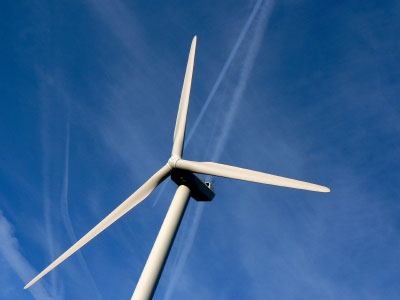 In my article on Wind Farms published on 10th July 2012, I concluded:-
In my article on Wind Farms published on 10th July 2012, I concluded:-
“It seems that wind farms are here to stay and are likely to increase greatly in numbers, until a more acceptable and efficient way is found to create electricity. It is difficult for us to make a rational decision fore or against when there is so little evidence to inform us about any potential short or long term effects…. but let us support those working on our behalf, such as the RYA and MCA, to make sure that the turbines are located where they will have the least detrimental effect to boating and the environment in general”.
Now, barely a year later, the Crown Estate has announced, at the Renewable UK conference, that it is considering a new multi-million pound project which will include the testing and demonstration of floating wind turbines. At the same conference, the Scottish minister for Energy Enterprise and Tourism announced a new subsidy to encourage developers to test floating wind turbines at sea.
What Difference Will They Make?
The wind turbines which we see at the moment around our coasts are built up from the sea bed. In 2012 the average water depth of offshore wind farms was 22 metres, at an average distance of 29 kilometres from the shore. These are not suitable for use in deeper water, but the developers are now working on wind turbines which can be moored either on huge platforms or on separate floats and used at much greater depths. According to the EWEA (European Wind Energy Association) the average water depth and distance to shore is set to increase to around 200 kilometres from shore and in water depths of up to 215 metres. Floating wind turbines are tethered to the seabed through the use of certain mooring systems that hold the turbine in place, but allow it to move within a specified limit set by the length of the mooring system.
It is believed that floating wind turbines in the deep waters of the North Sea could meet European Union electricity demand four times over and that they are the key to unlocking the energy potential of Europe’s seas. While the cost of developing new technology is expensive, the floating structures are thought to be cost competitive with fixed structures as they do not require the considerable amounts of steel for the foundations. They may hugely increase the scale of our wind farms at sea, but it would still be cheaper to build them within the 12 nautical mile territorial limit, even though these areas are particularly busy from both commercial and recreational boating. Locating wind farms out at sea can reduce visual pollution and provide better accommodation for fishing and shipping lanes. Also the wind is normally more consistent and stronger out at sea. There is a significant need to cut the costs of offshore wind energy and it is hoped that the floating wind turbines will help to do this, with the first deep-offshore wind farms being installed and connected to the European grid by 2017.
The UK is not on its own; the first large-scale operating floating turbine in the world, developed by a Norwegian company, has been producing electricity since 2009 and Portugal installed their floating system in 2012. The USA has testing projects in place and France too is in the process of developing test projects. Japan plans to build as many as 80 floating wind turbines off Fukushima by 2020, where the recent disaster has meant a scarcity of electric power.
The Impact On Boating
The RYA is concerned that the proposals regarding floating wind turbines could have a severe impact on recreational boating, both in loss of amenity and hazard to navigation. As a member of the Nautical and Offshore Renewable Energy Liaison Group they have worked hard over the last ten years to publicise the impact of proposed developments on the sailing community and to make sure that proposed development sites are shown on charts so that the overall impact can be assessed. They are concerned about the potential cumulative impacts of new technologies being deployed in already busy sea areas and they are pledged to object to any proposals that lead to a loss of amenity or have an adverse effect on recreational boating.
It’s a fine balance between the need for more energy sources and the protection of our cruising areas. Let’s hope that a sensible and effective compromise can be reached.
Author – Dee White